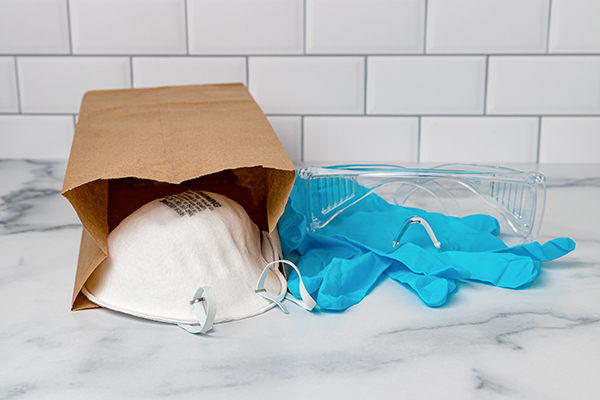Quat Binding – Why this Can Have a Disastrous Impact on Your Sanitation Program.
In June, I had the opportunity to represent FoodHandler and speak on food safety behavior for customers of Martin Bros. Distributing in Waterloo, Iowa. One of the questions that was asked caught me a little off guard. The question was about quat binding. It caught me off guard not because it was a bad question, but only because it was not something I had previously been asked nor had not yet been exposed to the phenomenon. However, I soon learned that in certain jurisdictions, it is resulting in changes to how sanitizing cloths are to be stored in sanitizing buckets (or not) in the foodservice industry. When I returned home from the trip, I had to dig into it to learn about what quat binding is and how it might impact foodservice operations.
I am sure no one reading this will dispute the importance of maintaining proper sanitation and how it is critical to ensure the safety and well-being of our guests and our employees. A common sanitizer used in many foodservice operations are quaternary ammonium compounds (quats). Quat binding occurs when the active ingredient, quaternary ammonium chloride, binds to and is ultimately absorbed into the cloth used to clean a surface. This occurs because quats are positively charged ions and cotton and other natural textiles that we commonly use in foodservice operations are negatively charged. If you think back to your high school science class, you might remember that positive attracts negative – think of a magnet, turned the right way, two magnets are attracted to each other, turn one around and they seemly repel each other.
Quat binding occurs when the active ingredient, quaternary ammonium chloride, binds to and is ultimately absorbed into the cloth used to clean a surface.
When quats bind to surfaces, their availability as antimicrobial agents decreases, making them less effective in killing pathogens. This can result in inadequate sanitation and increases the risk of foodborne illnesses. One study that explored quat binding in the healthcare setting found that allowing a cotton cloth to remain in a quat solution can reduce the concentration by almost half. Other data has noted that this binding starts almost immediately and can reduce the efficacy of the sanitizing solution by half within as little as 5 minutes.
The risks associated with quat binding cannot be overlooked. Understanding these risks and implementing proper mitigation measures are essential to safeguard food safety and protect consumers from potential health hazards. Regular monitoring of quat concentrations is crucial to ensure that the disinfectant levels remain within the recommended range. Supervisors and managers should also revisit standard operating procedures and determine what would be the best way to store the sanitizer cloths in between uses. The practice of storing the cloth in the solution, which has been standard practice for many operations, may warrant review with your team and your health inspector.
Late in June, we released the second quarter SafeBites webinar, entitled 2022 Year in Review: What We Can Learn From Foodborne Outbreaks. Check it out to learn about the major outbreaks from 2022 and what you can learn from them to protect your business! Risk Nothing.










